RESEARCH & SCIENCE
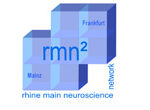 RHINE-MAIN NEUROSCIENCE NETWORK
RHINE-MAIN NEUROSCIENCE NETWORKIn shape for the German Excellence Strategy competition
The Rhine-Main Neuroscience Network (rmn²) looks back on five successful years and is now preparing to meet the challenges of the next half decade. rmn2 is expanding and planning to prove its scientific strength in the upcoming Excellence Strategy competition. Some 300 neuroscientists based in the Rhine-Main region came together for a three-day symposium during which they exchanged views, listened to presentations given by eminent colleagues, and drew up plans for the future.
 UNIVERSITY MEDICAL CENTER
UNIVERSITY MEDICAL CENTERCenter for Rare Diseases
The Center for Rare Diseases of the Nervous System (ZSEN) at Mainz University Medical Center was opened in late 2015. It is a key node in a new network of centers designed to treat people with rare diseases. It was previously the case that the majority of people suffering from these diseases had very low chances of receiving the correct diagnosis or successful treatment.
 CLEMENS BRENTANO COLLECTION
CLEMENS BRENTANO COLLECTIONThe mouse, the poet, and the dance
The Clemens Brentano Collection provides intimate insights into the life and world of one of the greatest German Romantic poets. Along with hundreds of examples of lively correspondence, there are drafts of poems and household plans, outlines for dramas and drawings. The collection, which was acquired by Johannes Gutenberg University Mainz (JGU) in 1950, is housed in the Mainz City Library.
 ICE LABORATORY
ICE LABORATORYThe riddle of the icy droplets
In order to understand atmospheric processes, it is necessary to discover how ice nuclei form within clouds. This is the task of the INUIT research group, to which Johannes Gutenberg University Mainz (JGU) is contributing. A team in the laboratory of the Institute of Atmospheric Physics is working with small drops, a wind tunnel like no other in the world, and a special cold chamber that will help find answers to these fundamental questions.
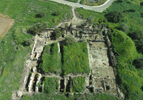 ANCIENT STUDIES
ANCIENT STUDIESSaving a desert palace in the green Jordan valley
The caliph's palace Khirbat al-Minya is an important testimony to early Islamic culture in Israel. However, the site has been falling into disrepair ever since German archaeologists uncovered it in the 1930s. Dr. Hans-Peter Kuhnen, Head Academic Director at the Department of Ancient Studies at Johannes Gutenberg University Mainz (JGU), has taken a first step to wards stopping the decay.
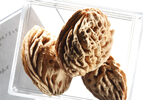 THE ARCHAEOBOTANICAL REFERENCE COLLECTION
THE ARCHAEOBOTANICAL REFERENCE COLLECTIONThe essence of all things
The largest object is a peach stone lying next to cereal grains, tiny grape pips, and the seeds of wild herbs. At first glance, the Archaeobotanical Reference Collection of the Pre- and Protohistoric Archaeology division at the Department of Ancient Studies at Johannes Gutenberg University Mainz (JGU) seems anything but impressive. But as Dr. Margarethe König begins to tell of the stories and history that form its background, it is becoming more and more interesting.
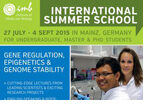 INSTITUTE OF MOLECULAR BIOLOGY
INSTITUTE OF MOLECULAR BIOLOGYSummer vacation with top researchers
The International Summer School (ISS) organized by the Institute of Molecular Biology (IMB) in Mainz offers students from around the world an opportunity to participate in an exceptional program. Every year IMB selects a small group of budding scientists from hundreds of applicants and, next to lectures, directly involves them in current research projects for a period of six weeks. The Mainz University Medical Center and the Faculty of Biology of Johannes Gutenberg University Mainz (JGU) also participate in this project which contributes towards enhancing Mainz's reputation as an international science hub.
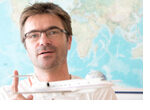 ATMOSPHERIC PHYSICS
ATMOSPHERIC PHYSICSTracking the climate by airplane
Professor Peter Hoor and his Airborne Measurements and Transport Processes work group at the Institute of Atmospheric Physics at Johannes Gutenberg University Mainz (JGU) are studying the processes that occur in the tropopause. The events that take place in this boundary layer between the stratosphere and the troposphere are still puzzling scientists but have significant effects on the climate of our planet.
 HISTORICAL CULTURAL STUDIES
HISTORICAL CULTURAL STUDIESFrom parchment to the Internet
The Augsburg Master Builders' ledgers offer deep insights into the history of an important German imperial city. This nearly seamless chronicle extends over almost five hundred years. Professor Jörg Rogge of the Department of History of Johannes Gutenberg University Mainz (JGU) has initiated a project which aims at preparing a digital version of this amazing historical source documentation.
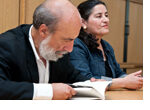 RESEARCH FUNDING
RESEARCH FUNDINGArte es Vida – Life is Art
Through its internal Research Funding Line I, Johannes Gutenberg University Mainz (JGU) provides support to various research projects. Among these is an unusual undertaking that focuses on the Chilean artist collective C.A.D.A., its members, and their global links to other avant-garde movements. This is the particular interest of Liliana Bizama of the Faculty of Translation Studies, Linguistics, and Cultural Studies in Germersheim.
